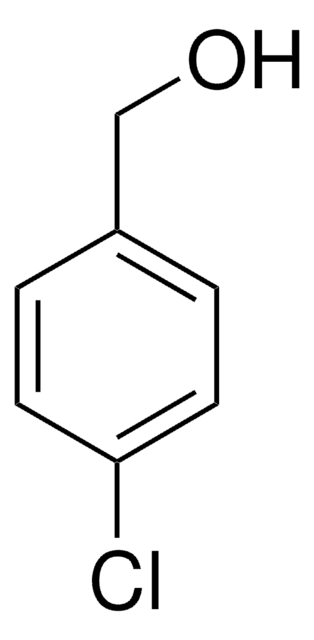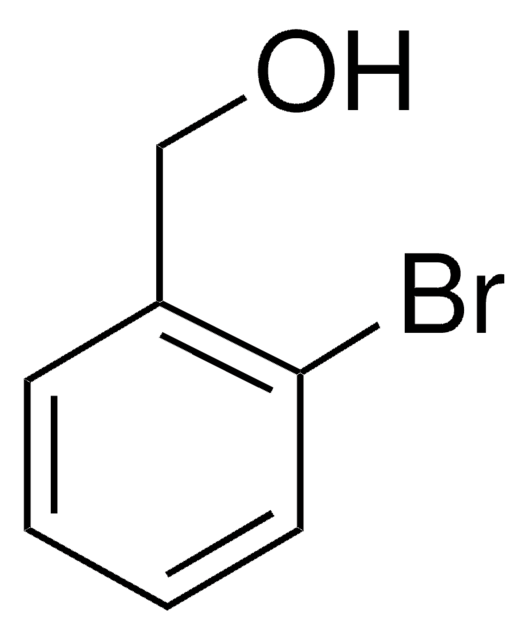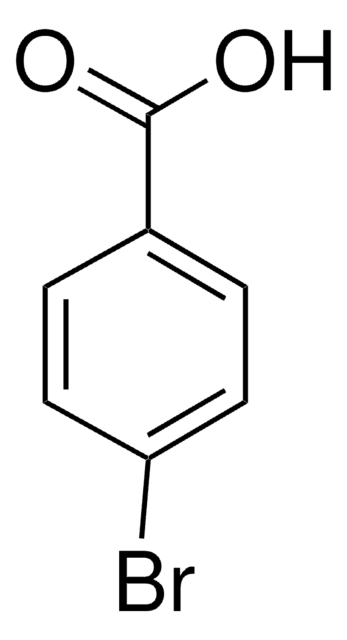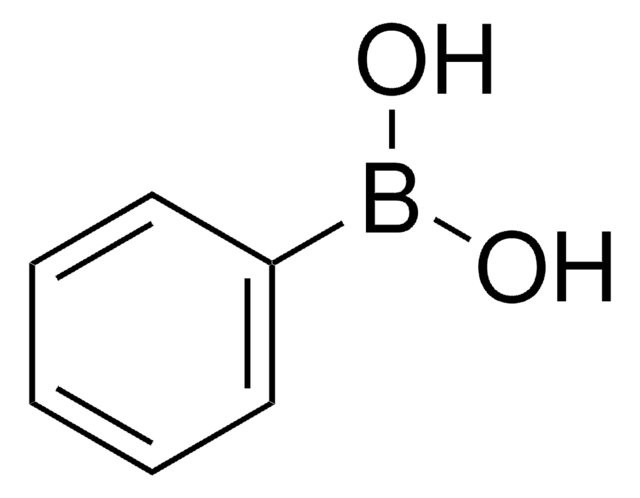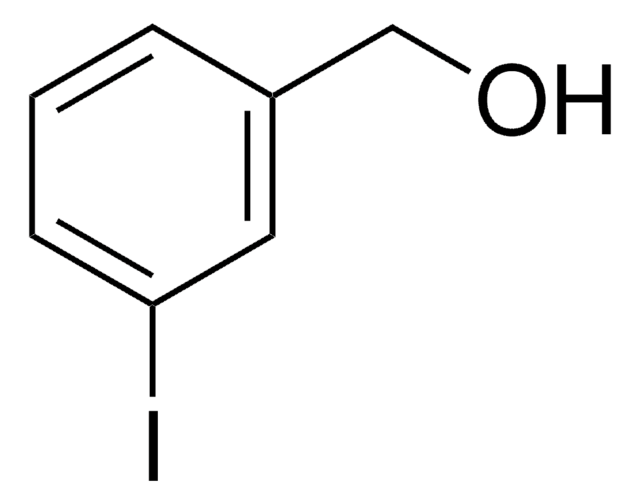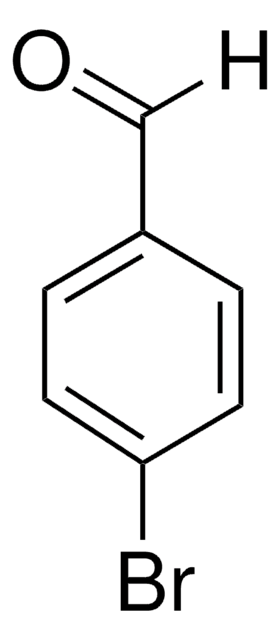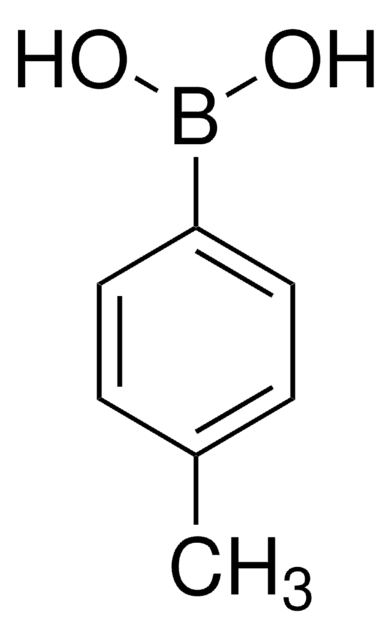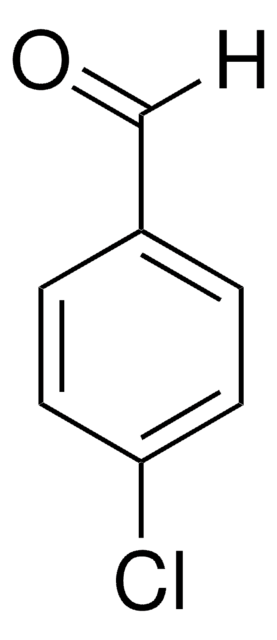187054
4-Bromobenzyl alcohol
99%
Sinónimos:
(4-Bromophenyl)methanol, (p-Bromophenyl)methanol, 1-(p-Bromophenyl)methanol, 1-Bromo-4-(hydroxymethyl)benzene, 4-Hydroxymethyl-1-bromobenzene, p-Bromobenzyl alcohol
About This Item
Productos recomendados
Quality Level
assay
99%
form
solid
mp
75-77 °C (lit.)
solubility
dioxane: soluble 1 g/10 mL, clear to faintly turbid, colorless to faintly yellow
functional group
bromo
hydroxyl
SMILES string
OCc1ccc(Br)cc1
InChI
1S/C7H7BrO/c8-7-3-1-6(5-9)2-4-7/h1-4,9H,5H2
InChI key
VEDDBHYQWFOITD-UHFFFAOYSA-N
Gene Information
human ... ALOX12(239) , ALOX15(246)
¿Está buscando productos similares? Visita Guía de comparación de productos
Categorías relacionadas
General description
Application
- hydroxyl end functionalized, substituted polyfluorene
- amphiphilic, symmetric rod-coil, triblock copolymer of poly(9,9-didodecylfluorene-2,7-diyl) and poly(hydroxyl ethyl methacrylate)
hcodes
pcodes
Hazard Classifications
Aquatic Chronic 3
Storage Class
13 - Non Combustible Solids
wgk_germany
WGK 3
flash_point_f
Not applicable
flash_point_c
Not applicable
ppe
Eyeshields, Gloves, type N95 (US)
Elija entre una de las versiones más recientes:
¿Ya tiene este producto?
Encuentre la documentación para los productos que ha comprado recientemente en la Biblioteca de documentos.
Los clientes también vieron
Nuestro equipo de científicos tiene experiencia en todas las áreas de investigación: Ciencias de la vida, Ciencia de los materiales, Síntesis química, Cromatografía, Analítica y muchas otras.
Póngase en contacto con el Servicio técnico